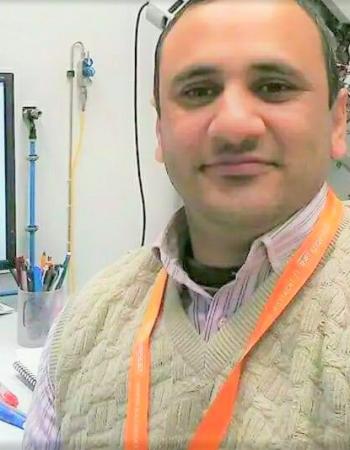Revisiting Alloy Design of Al-Base Alloys for Potential Orthotics and Prosthetics Applications
The primary objective of this research was to open a promising avenue for designing new low-cost precipitation-hardened Al base alloys in semblance with the desired mechanical properties that can be exploited in the fabrication of lightweight exoskeleton frames, prosthetics, and wheelchair components. In multicomponent Al-Cu-based systems (2xxx), the substitution of elements such as copper (Cu), magnesium (Mg), and akin Cu/Mg ratio are mainly manipulated to improve the mechanical strength of these alloys. Nonetheless, these kinds of alloying optimizations are not well suited from the cost and sustainability points of view. The starting point of the present work is to screen out the optimum value of the Ag/Sn ratio, which can be a potential substitute for the conventional Cu/Mg alloy ratio in Al-Cu-Mg-based ternary alloys without sacrificing its key features of mechanical properties. Based on our microstructural and mechanical results, it was found that the chemical composition and microstructure were the most important variables influencing the mechanical properties. The increase in the mechanical strength of our alloys was mainly attributed to the precipitation hardening phenomenon. Typically, at peak-aged conditions, the correlation between the mechanical and subsequent microstructural analysis revealed that the synergistic increase in Ag and Sn content in the Al-Cu-Mg-based alloy led to an improvement in the mechanical strength and its trade-offs by changing the shape and distribution of the micron-scaled second phase in the matrix. From optical microscopy and subsequent scanning electron microscopy analyses, this continuous precipitated phase in the matrix is identified as the Mg2Sn phase, which is mainly elicited from the solid-state reaction during artificial aging treatment. Indeed, the presence of suitable microstructure at the peak aged condition that has uniformly dispersed, micron-scale Mg2Sn phase proved to be very useful in blocking the dislocation glide and increasing the mechanical strength of the alloys during tensile testing. This combination of precipitation-hardening phases has not been previously observed in alloys with higher or lower Cu/Mg ratios. Among the studied alloys, the alloy having Ag/Sn ratio of 23 (and chemical composition of Al-4 Cu-0.5 Mg-0.7 Ag-0.03 Sn (wt.%)-T6 (denoted as Al-loy-4) exhibited an average ultimate tensile strength of 450 MPa which is almost four times larger than the pure aluminum having an ultimate tensile strength of 90 MPa currently used in healthcare and medical industries.

Surgeons face a significant challenge due to the heat generated during drilling, as excessive temperatures at the bone-tool interface can lead to irreversible damage to the regenerative soft…

The quest for lightweight, high-performance structural materials for demanding applications such as in the fields of automotive, aerospace, and other high-tech and military industries pushes the…

Falling on the ground can cause serious injuries such as bruises, broken bones, head injuries, etc. Annually, 684,000 individuals die globally from
falling to the ground. There are more than…

